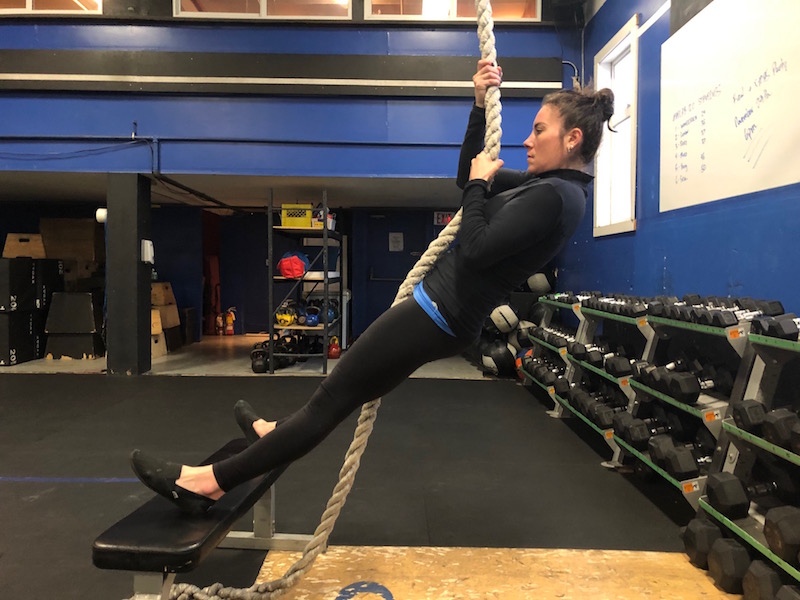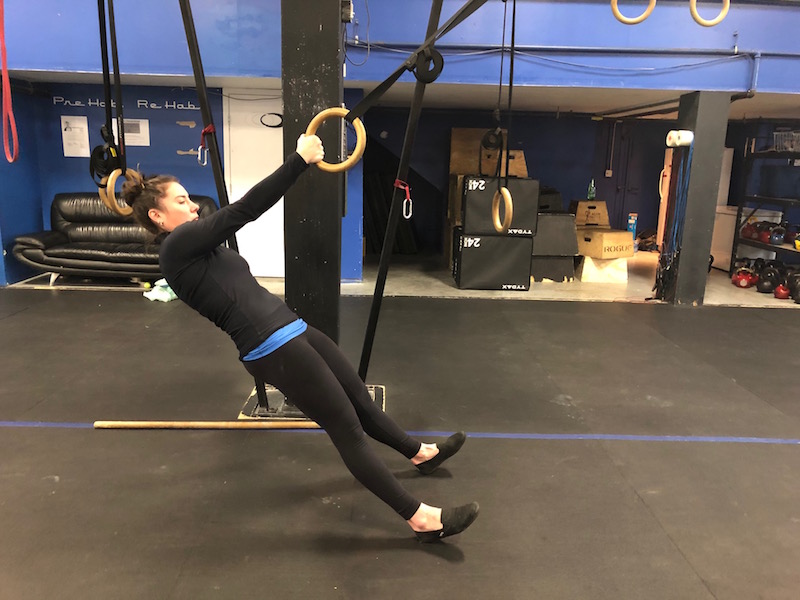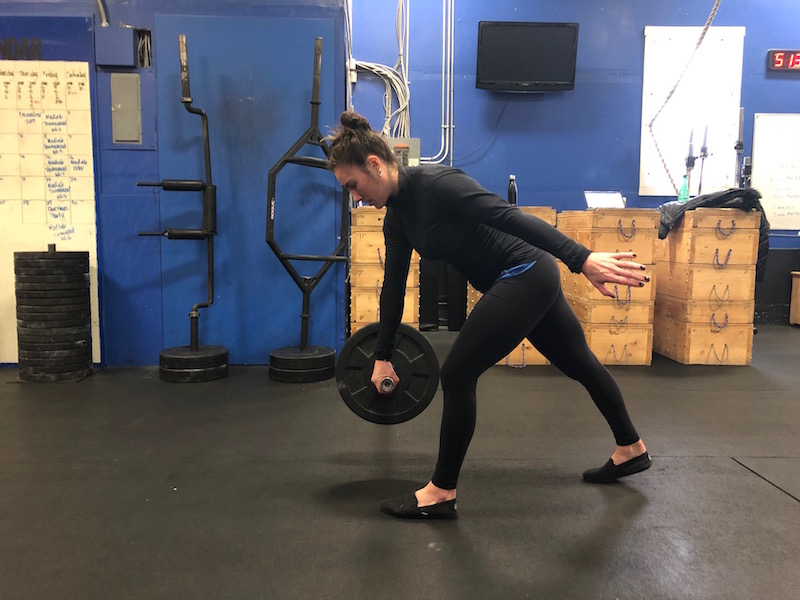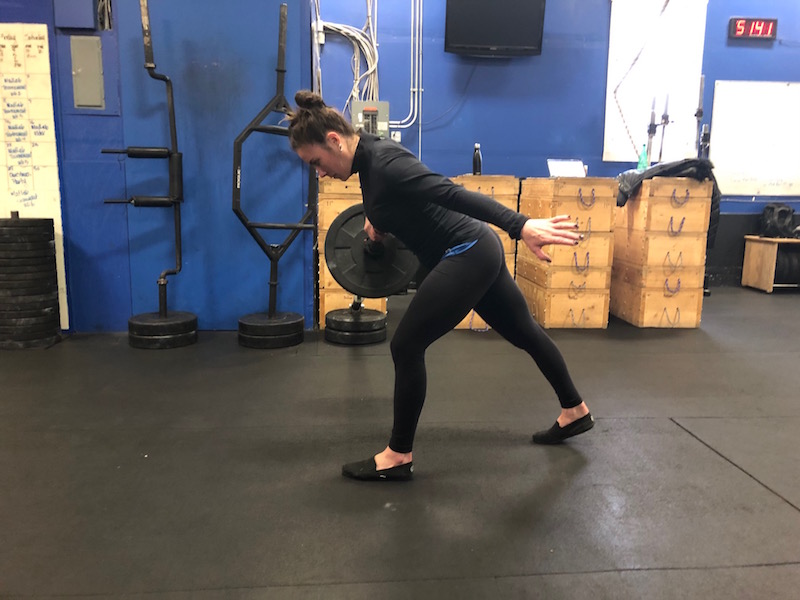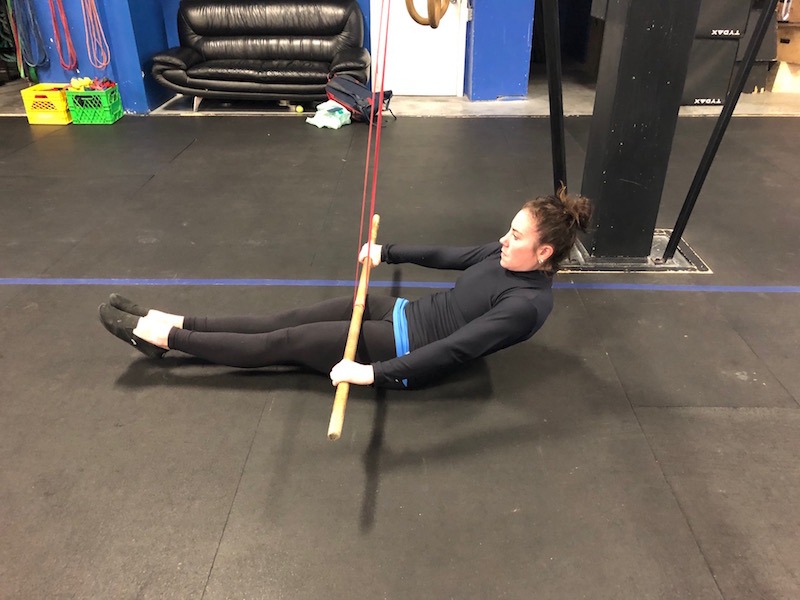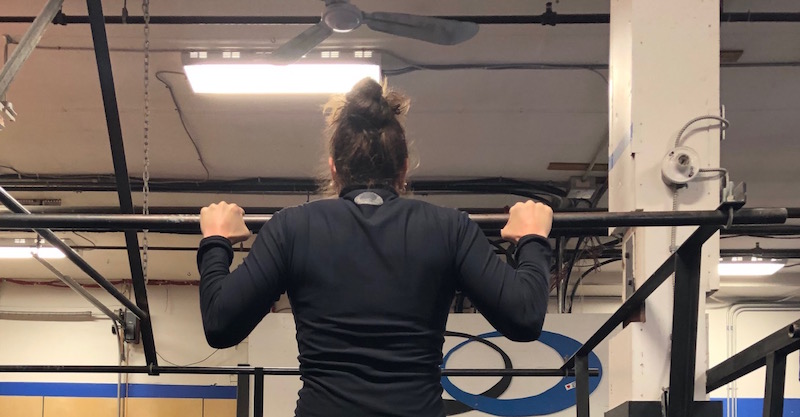After a high-volume pull-up training session—be it kipping or strict pull-ups—where does the soreness hit you the next day?
If your answer is The bottom of my biceps, then there’s a good chance your lats aren’t helping you very much when you pull. And although you can still become decent at pulling movements by relying on your biceps, if your lats aren’t also participating, you are leaving a ton of strength on the table.
I admit, I have a lat deficiency, and for many years my solution was simply to do more, more, more pull-ups. It worked to a certain degree—I did get better at strict pull-ups—but then I hit a plateau, because I was just logging volume, as opposed to fixing my lat deficiency.
So more recently, I have been retraining myself to actually use my lats and it’s making a world of difference.
Here are five particularly helpful movements to give those lats no chance not to fire:
During all of these movements, here’s what you want to think about:
When we grab onto a bar for a pull-up, or a DB for a bentover row, for example, our natural instinct is to think about pulling the DB to our body, or our body to the bar in the case of a pull-up. This automatically activates our biceps.
Instead, think of your hands and forearms as being hooks that connect your elbows to the bar or the DB, or whatever you’re holding onto. Their only role is to grip. From there, focus on your elbows by imagining there’s something or someone behind you. Your job is to hit them with your elbows, as if you’re a tow truck pulling a car.
1. Seated rope pulls
Start seated with your feet on a bench or box and gran onto a rope. Then start to pull yourself up by driving your elbows back, one hand at a time (keeping your hips as high as your can), until you’re in an upright position on the bench. Then, once again, slowly lower yourself, hand-over-hand, until you’re back on the ground. These are great as they isolate one lat at a time.
2. Single arm ring row
Similar to the rope climb pulls, single arm ring rows are ideal for isolating one lat at a time. You will likely have to place your body in a more upright position than you would if you were using two hands.
3. Landmine single arm row
This is sort of like a bentover DB row, but with a barbell anchored into a landmine contraption. Again, focus on driving your elbow straight back.
4. Hollow hold lat pulldowns
Attach a band to a bar overhead and then place a dowel through the band. Lay on your back, keep your arms straight and pull the band to your waist as you pull yourself into a hollow body position. Then return to the starting position slowly, focusing on slowing the movement down by resisting with your lats.
5. Wide grip pull-up
One of the easiest ways to get your biceps to takeover during a pull-up is to place your hands super close together. When they’re wider, it will force you to activate the pull with the lats. Yes, you might feel a whole lot worse at pull-ups in the short term, but widening your grip is a great training tool to get those lats working harder than they normally do.
